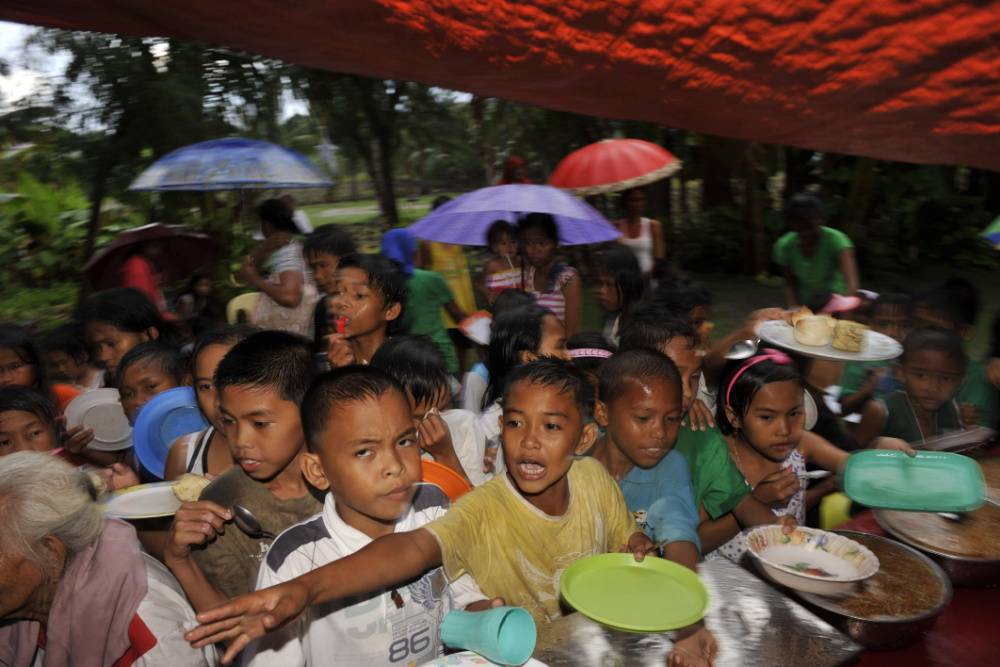The Philippine government launched a flagship project called “Walang Gutom 2027: Food Stamp Program”. It aims to resolve the issue of hunger in the country.
The Philippines government issued Executive Order (EO) 44 called “Walang Gutom 2027: Food Stamp Program”. Lucas Bersamin, the executive secretary who signed EO 44, assigned the Philippine Department of Social Welfare and Development (DSWD) as the head government sector obligated to execute and supervise the program. This program aligns with the United Nations Sustainable Development Goal 2, Zero Hunger.
The Reason Behind the Program
Based on a report from the United Nations Food and Agriculture Organization, from 2017 to 2023, 53.3 million Filipinos faced moderate to severe insufficiency in their daily provision of food. 5.3 million are considered to be severely insecure. Meanwhile, the other 48 million individuals encountered either moderate or severe levels of food insecurity.
Additionally, it was also observed that 5.7 million Filipinos were undernourished. This means that these individuals could not obtain sufficient food to satisfy their basic daily dietary energy needs throughout the course of one year. It is equivalent to 7 out of 10 Filipinos who cannot afford the proper nutrition that they need. Thus, the call to create a program geared towards alleviating this pressing national challenge is an actual must.
The Objectives
The program was made in line with the nation’s objectives to eradicate hunger, enhance food stability, and encourage better dietary habits by 2030. It also corresponds with the strategy to ensure that safe and nutritious food is readily available to Filipino citizens in the forthcoming years, as specified in the Philippine Development Plan 2023-2028 and the administration’s 8-Point Socioeconomic Agenda.
The program will provide monetary-based assistance via Electronic Benefit Transfer cards to the beneficiaries. They consist of the most economically disadvantaged families struggling to afford an adequate diet. This is specifically those with a monthly income below P8,000, as well as households with expectant and nursing mothers.
According to Social Welfare Secretary Rex Gatchalian, the initiative is not solely a “short-term remedy,” Program beneficiaries will be obliged to participate in training and development sessions and also engage in the labour force.
“You might view the Food Stamp Program as a temporary measure… When individuals lack the energy to work, they can’t contribute. The aim is to assist them in the three to four years via the program so that they can adopt a nutritious diet, giving them the vitality to contribute to the nation’s progress actively. Once a person secures employment, they can exit the program, signifying the successful accomplishment of our objectives.” stated the DSWD secretary.
Planning a Successful Execution
The DSWD is responsible for identifying qualified beneficiaries and working with relevant partners to ensure the efficient and punctual issuance and utilisation of food vouchers. This is in order to guarantee the program’s successful execution.
Moreover, the DSWD must collaborate with government sectors to improve program execution, set staffing and qualifications for new roles, and propose necessary internal changes. Government agencies received instructions to fully support and collaborate for the project’s effective implementation.
Last July, the DSWD initiated a pilot launch of the food voucher initiative, starting with 3,000 households distributed among five regions: Tondo, Manila; Dapa, Siargao; San Mariano, Isabela; Garchitorena, Camarines Sur; and Parang, Maguindanao.
How does the program work
At the launch, the government announced the “Walang Gutom 2027: Food Stamp Program” as a major national project.
The program employs Electronic Benefit Transfer (EBT) cards that are valid for acquiring specific food items at authorised partner retail outlets. These cards will receive monthly credit amounting to Php 3000. Eligible families can then use these for purchasing specific food items at affiliated stores. The EBT card receives a monthly reload, and any remaining balance rolls over to the following month.
According to Romel Lopez, who serves as the DSWD’s representative, families have the option to utilise their individual cards for acquiring specific food items from authorised retailers registered with the DSWD.
Electronic Benefit Transfer Card
Lopez also explained that the points loaded in the EBT cards cannot be converted to cash. This is to avoid the potential misuse of the card for purposes like purchasing alcohol and tobacco. Additionally, cardholders can use it to buy a specific range of food items such as rice, corn, noodles, bread, flour, pasta, grains, cereals, as well as meat, poultry, seafood, coffee, milk, cooking oil, butter, margarine, and more.
Lopez highlighted that the primary focus for partner merchants is the Kadiwa centres. President Ferdinand Marcos Jr. initiated this. The design aims to offer affordable food and goods amid rising prices. Later, micro, small, medium enterprises, and bigger supermarkets will join the program.
The DSWD has set up a monitoring system for partner merchants to ensure eligible families use food credits responsibly.
Conclusion
In a nation where millions battle hunger daily, the ‘Walang Gutom 2027: Food Stamp Program’ shines as a beacon of hope. This initiative is more than just a quick fix; it’s a long-term strategy to combat hunger and malnutrition. With Electronic Benefit Transfer cards, vulnerable families will have access to sustenance, and the program offers a path to self-sufficiency through training and employment. As it rolls out nationwide, it promises a hunger-free Philippines, aligning with global efforts to achieve ‘Zero Hunger’ by 2030.
Learn more about this…
Singapore Unveils Nutritional Guidelines for Younger Generation

